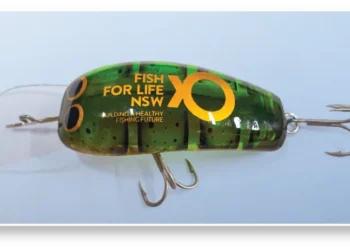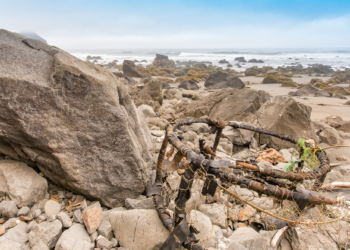
AQUACULTURE has for a couple of decades been something of a pinup industry for a whole suite of interest groups desperate to save the world’s fish stocks while meeting the need to provide safe seafood for human consumption. In Australia we’ve put in tight regulations to protect both the environment and competing resource users, regulations in some cases so demanding that fish farm pioneers have gone broke with compliance costs before getting the chance to make a profit. The money all goes out for the first couple of years in a new venture. Industry insiders used to joke that only the second owners of an aquaculture venture make any money.
Tasmanian Atlantic salmon and to a lesser extent ocean trout have been massive commercial successes and the salmon became Australia’s most consumed finfish. But there are a couple of significant problems with large-scale sea cage finfish farming. One is silting. As the Scots learnt twenty or so years back, if you put farms in poorly flushed waterways such as lochs you get toxic substance build up under the cages, with the risk of fish ill health or mass deaths. If the fish aren’t healthy, they’re susceptible to attacks from parasites such as sea lice.
Secondly, if you place your farms too close to where people live, the noise and environmental impact are going to breed bad relationships. Witness Richard Flanagan’s recent book “Toxic: The Rotting Underbelly of the Tasmanian Salmon Industry” and the ABC’s 4 Corners Macquarie Harbour expose of a couple of years back.
Thirdly, the natural environment is not part of a fish farmer’s infrastructure and nature should not bear the risk of the endeavour. So, shooting at seals and seabirds, even with bean bags or blanks, is just as unacceptable as polluting a waterway. And, in the case of salmon, having to catch more wild fish for feed than the fish you’re growing surely can’t be sustainable in the long term.
But from a rec fishing perspective there are lots of benefits if fish farming is done right. Easing fishing pressure on key commercially targeted species and allowing stocks to rebuild. Developing breeding techniques to provide huge numbers of juveniles for restocking in open and closed waterways, both fresh and salt. Harnessing R&D efforts to add species such as mangrove jacks, cobia and mahi mahi to the snapper, mulloway, barra and freshwater species already mastered. And, beyond rec fishing, when species that thrive on non-fish derived foods from meat meal, legumes and other vegetable sources are grown in big numbers, bait fish and wild food chains are less at risk. Farmed tilapia, carp, catfish and our silver perch can help feed the world.
















